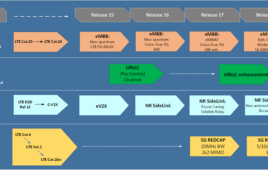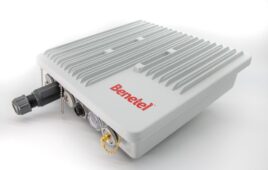After the WP7-based, LTE-capable Nokia Lumia 900 stole the show at the 2012 International CES earlier this month, it’s probably not too much of a surprise that IHS iSuppli is speculating that Nokia has set the stage to regain some of its lost smartphone market share and to re-establish Microsoft’s Windows Phone as a leading contender in the cell phone operating system (OS) business.
IHS goes so far as to suggest that with Nokia’s hardware and global reach, WP7 is set to regain the No. 2 rank in the smartphone operating system market in 2015. Finnish-based Nokia in 2009 lost its second-place worldwide ranking because of rising competition from Google’s Android and Apple’s iOS.
The firm predicts that by 2015, Windows Phone will account for 16.7 percent of the smartphones shipped, up from less than 2 percent in 2011.
“One of the hottest new products unveiled at the Consumer Electronics Show was the Lumia 900, a Windows Phone-based smartphone sporting a flashy set of features that makes it competitive with the best alternatives offered by the Android camp,” said Wayne Lam, senior analyst for wireless communications at IHS, in a statement. “This hot product represents Nokia’s first step to reclaim its market share. Combined with Nokia’s efforts to drive the development of the Windows Phone ecosystem, the Lumia 900 and its successors will help Microsoft to reclaim its No. 2 ranking in smartphone operating system market share in 2015.”
And while Nokia’s global reach is a big boon for Microsoft’s mobile platform, a big part of WP7’s success will rely heavily on how customers here on the North American continent receive these devices.
“The introduction of the Lumia 900 shows that Nokia believes the road back to smartphone dominance runs through North America,” said Francis Sideco, senior principal analyst for consumer and communications at IHS, in a statement. “And the way to win North America is through its operator channels.”
IHS iSuppli also likes the fact that Nokia came to the U.S. market with an LTE-capable device right off the bat.
In the past, Nokia always introduced new technologies in its home European market first, Sideco said. “However, for the Lumia 900 — Nokia’s first LTE phone — the company initially is rolling it out in North America. This demonstrates Nokia’s commitment to re-enter the region.”
Although Nokia is not the only seller of Windows Phone smartphones, IHS iSuppli expects the company to dominate the market, accounting for 50 percent of all Microsoft OS-based handsets sold in 2012. The company’s share then is set to rise to 62 percent in 2013. Nokia’s portion of the market will begin to decline in 2014, as other companies increase their sales of Windows Phone products.
Nonetheless, Nokia will drive the development and expansion of the Windows Phone market, opening up opportunities for other players, Lam said. “Because of Nokia’s support, apps developers will eagerly shore up the Windows platform. This will cause other makers of Windows Phone devices, such as Samsung and HTC, to offer more products supporting the OS — further expanding the market.”
Projections and predictions aside, it’s definitely wait-and-see time for Nokia and Microsoft. But given the Lumia line’s favorable reviews and the relatively smooth ride to market, WP7 appears to be on the road to success.




